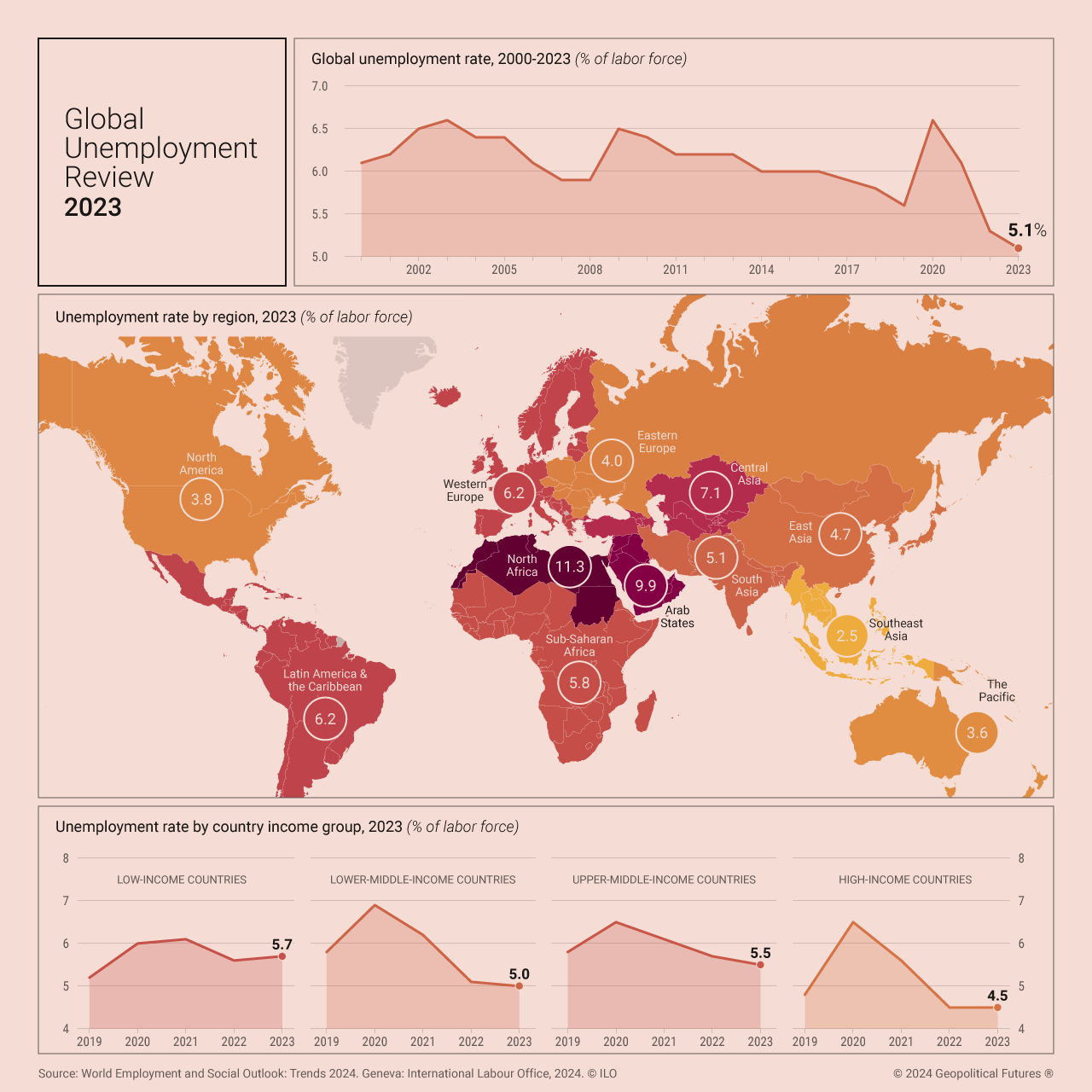Global employment rates have returned to pre-pandemic levels despite 2023’s macroeconomic downturns. Yet, multiple indicators reveal underlying fragility in the labor market. The Ukraine war, Gaza conflict, U.S.-China trade tensions and other geopolitical conflicts continue to inject uncertainty, driving central banks to aggressive actions. Consequently, global economic growth has decelerated.
Labor market imbalances persist in advanced and some emerging economies. The International Labor Organization now views these imbalances as structural rather than cyclical. In many economies, real wage growth is falling, with most G20 countries seeing wages lag behind inflation. The number of workers in extreme poverty increased by about 1 million last year. Despite technological advancements, productivity growth is slowing, indicating that increased investment has not translated into productivity gains.
Looking ahead, significant concerns about labor and skills shortages remain in advanced and some emerging economies. A notably large segment of youth has exited the labor market, with those returning working fewer hours than before. With the global economy expected to slow further this year, the resilience of the global labor market will face a critical test.




 The Geopolitics of the American President
The Geopolitics of the American President